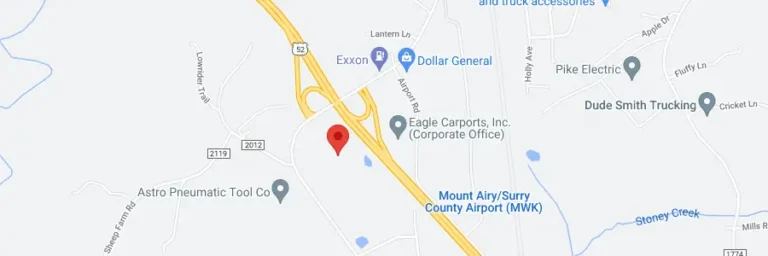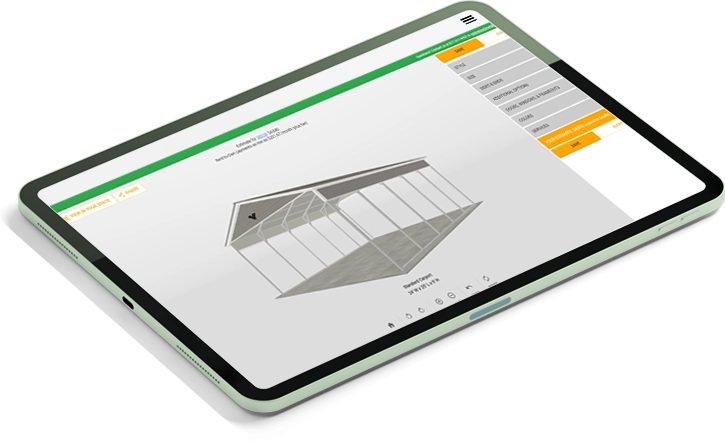Building a garage is a significant investment, and choosing the right foundation is a crucial…
When it comes to building a metal garage, the foundation is the unsung hero that quietly ensures the stability and longevity of your structure. A solid concrete slab is not just a necessity; it's a vital investment in the safety and functionality of your garage. Whether you're a DIY enthusiast looking to take on the challenge or simply want to understand the process better, this step-by-step guide for how to pour a concrete slab provided by our metal garage installation experts at Metal Carports will walk you through the essential stages of pouring a concrete slab for your metal garage.
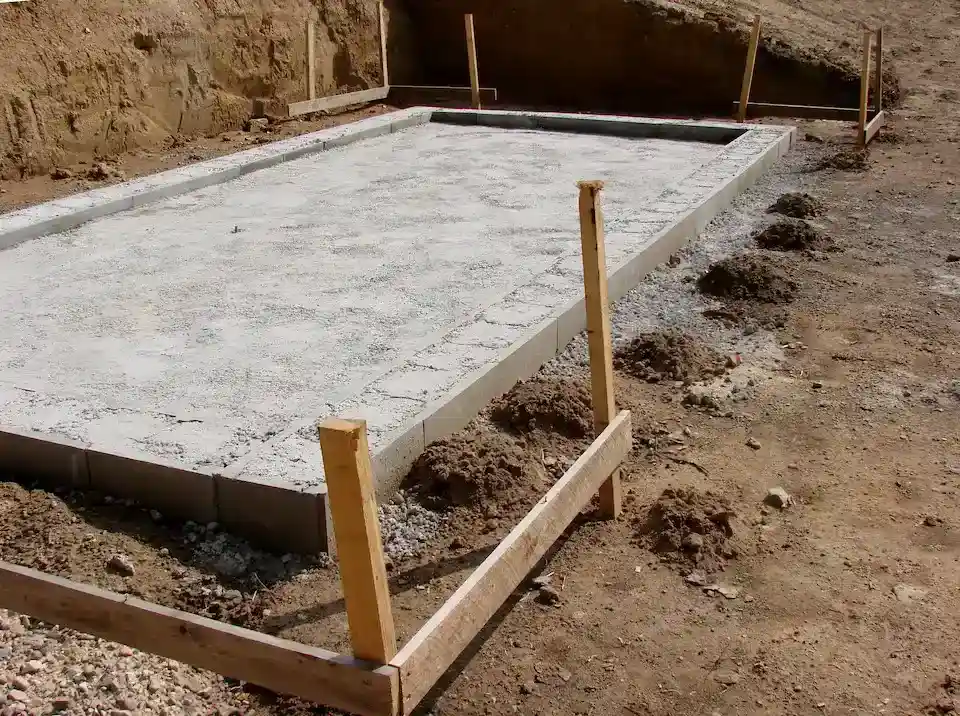
Safety Precautions for Pouring Concrete
Ensuring safety is paramount when working on any construction project, and pouring a concrete slab for your metal garage foundation is no exception. Let's take a closer look at the Personal Protective Equipment (PPE) and safety guidelines essential for learning how to pour a concrete slab.
Personal Protective Equipment (PPE)
When learning how to pour a concrete slab for your metal garage project, it's important to have the following equipment:
- Head Protection: Start at the top with head protection. A hard hat is essential to guard against potential falling objects, especially when working with formwork, tools, or equipment overhead.
- Eye Protection: Your eyes are incredibly vulnerable on a construction site. Safety glasses or goggles shield your eyes from dust, debris, and splashing concrete mix.
- Hand Protection: Concrete can be abrasive and may contain chemicals that can irritate your skin. Wear heavy-duty gloves to protect your hands from contact with wet concrete or sharp objects.
- Respiratory Protection: Concrete dust can be harmful if inhaled, leading to respiratory issues. A dust mask or respirator with the appropriate filtration rating is crucial for minimizing exposure.
- Footwear: Sturdy work boots with slip-resistant soles provide the necessary protection for your feet. They also help prevent injuries from heavy objects or tools accidentally landing on your feet.
- Hearing Protection: Construction sites can be noisy places. Earplugs or earmuffs can protect your hearing from prolonged exposure to loud machinery or tools.
Safety Guidelines for Working with Concrete
In addition to personal protective equipment, if you're taking a DIY approach to how to pour a concrete slab for your metal garage it's important to pay attention to the following safety procedures:
- Read Instructions: Before starting any concrete-related task, familiarize yourself with the manufacturer's instructions on concrete mix bags, tools, and equipment. Understanding proper usage is key to safety.
- Avoid Overexertion: Concrete work can be physically demanding. Lift heavy materials with proper lifting techniques and, when possible, use machinery like wheelbarrows or concrete mixers to reduce physical strain.
- Stay Hydrated: Working in the sun or hot weather can lead to dehydration. Drink plenty of water throughout the day to stay hydrated and prevent heat-related illnesses.
- Watch Your Step: Concrete can be slippery when wet, so exercise caution when moving around the work area. Use anti-slip shoes or boots to reduce the risk of slipping and falling.
- Maintain a Clean Work Area: Keep your work area organized and clean to reduce tripping hazards and ensure a safe environment for you and your team.
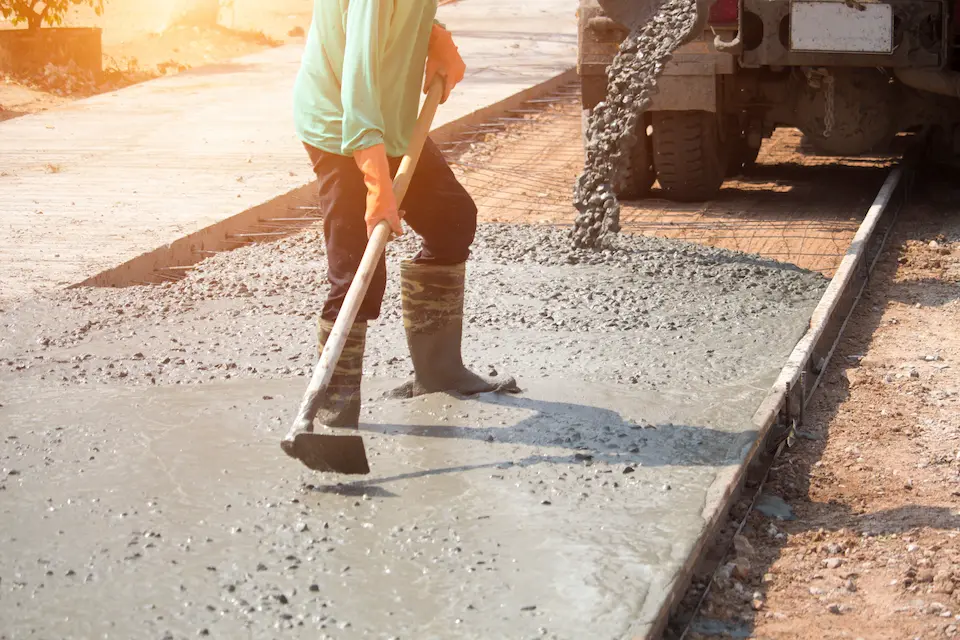
Mixing and Pouring Concrete for a Metal Garage
With the site properly prepared, it's time to move on to the heart of your concrete slab project: mixing and pouring the concrete. Double-check that you have all the materials on hand, including the concrete mix, water, and any additives required. Follow the manufacturer's instructions to determine the correct mix ratio for your concrete. This typically involves combining cement, aggregates (sand and gravel), and water in precise proportions. Consider using a concrete calculator to ensure accuracy.
Depending on the quantity of concrete needed, you can mix by hand with a shovel and wheelbarrow or use a concrete mixer. A mixer ensures thorough and consistent mixing. If your project requires special additives like accelerators or plasticizers, incorporate them into the mix as per the manufacturer's recommendations. Add water gradually while mixing. Aim for a concrete surface mix that's workable but not too wet. The goal is to achieve a consistency that allows for easy pouring and finishing.
How to Pour Concrete
Pour concrete straight into the prepared formwork. Use a wheelbarrow or concrete bucket for controlled pouring, and avoid dumping large quantities all at once to prevent damage to the formwork. As you pour mixed concrete, distribute the concrete evenly across the entire slab area. This ensures a consistent thickness and helps prevent weak spots.
After pouring, use a screed board (a long, straight board) to level the concrete. Place the screed board on top of the formwork and use a sawing motion to move it back and forth. This levels the surface and removes excess concrete.
Smoothing the Surface
Following the initial screening, use a bull float (a large, flat tool with a long handle) to further smooth and level the surface. Use long, sweeping motions to eliminate high spots and fill in low areas. After bull floating, use an edging tool to create clean, defined edges around the perimeter of the slab. This not only enhances the appearance but also helps prevent chipping.
Finishing and Curing Techniques for Concrete Slabs
As the concrete begins to set, it's essential to focus on finishing and curing to ensure the strength, durability, and longevity of your metal garage's foundation.
Edging and Jointing the Concrete Slabs
Edging involves creating clean, defined edges around the perimeter of the concrete slab. Use an edging tool to shape the edges while the concrete is still somewhat pliable. This not only enhances the appearance but also prevents chipping and cracking along the edges.
Create control joints or expansion joints in the concrete to control cracking and allow for movement. Control joints are cut into the concrete within the first 6 to 12 hours of pouring. They are typically spaced at intervals of 1.5 times the slab's thickness. Expansion joints, on the other hand, are used to accommodate significant temperature-induced expansion and are typically filled with a flexible material.
Creating Expansion and Control Joints
To create control joints, use a groover tool or a hand-grooving tool to make straight, shallow cuts in the concrete. These cuts encourage controlled cracking along predetermined lines, reducing the likelihood of random, unsightly cracks.
Install expansion joint material in areas where you expect significant temperature-related movement. This material allows the concrete to expand and contract without cracking. Secure the expansion joint material to the base or subgrade before pouring concrete.
Covering the Slab for Curing
To prevent the concrete from drying out too quickly, apply a curing compound or curing membrane. This helps maintain the required moisture levels for proper curing. Follow the manufacturer's instructions for application and drying times. Alternatively, you can wet-cure the concrete by spraying it with water or laying wet burlap over the surface. Keep the concrete consistently moist for at least seven days, ensuring it doesn't dry out prematurely.
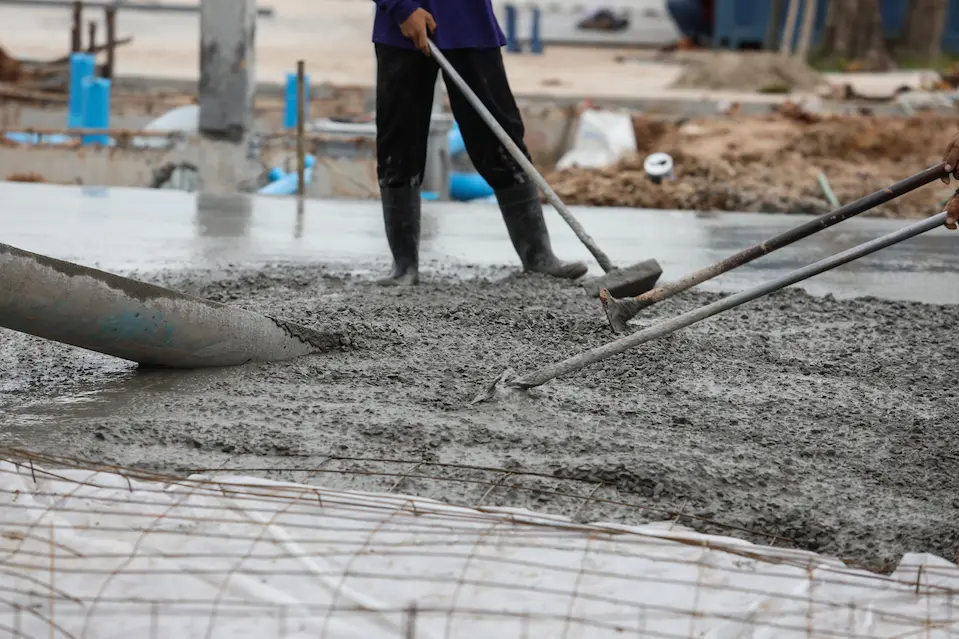
Installing Your Metal Garage with Metal Carports
Whether you're using it as a storage space, a workshop, or a shelter for your vehicles, a metal garage is a fantastic addition to your property. While you've already put in the effort to ensure a solid concrete foundation, the installation process of the metal structure itself is equally critical. That's where professional metal building installation by experts at Metal Carports comes into play.
Our professionals offer:
- Expertise and Experience
- Precision and Quality
- Compliance with Local Codes
- Time Efficiency
- Safety First
- Warranty Assurance
- Customization and Options
- Stress-Free Experience
Contact Our Metal Garage Installation Experts Today
Ready to transform your property with a sturdy and functional metal garage? Contact our metal garage installation experts today and take the first step toward realizing your project. Whether you need a secure shelter for your vehicles, a spacious storage solution, or a dedicated workshop, there are many creative uses for a metal garage. Our team has the knowledge, experience, and dedication to bring your vision to life.
Here's your chance to experience expert craftsmanship, compliance with local codes, and a stress-free installation process. Plus, our professionals can help you customize your metal garage to meet your specific needs and preferences.
Get started today by calling Metal Carports at 877-517-4422 or filling out our contact form below.
Contact Us
"*" indicates required fields

